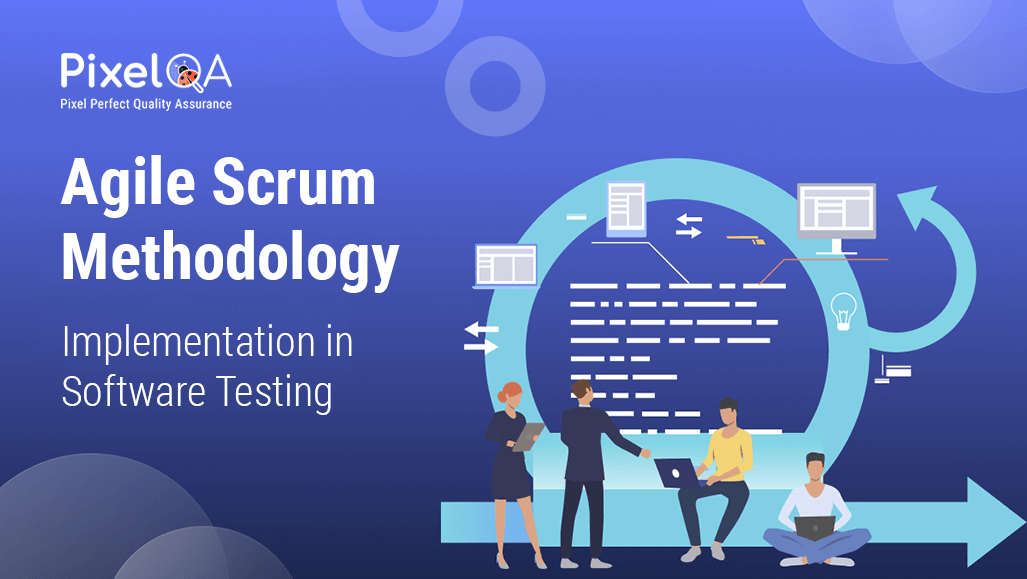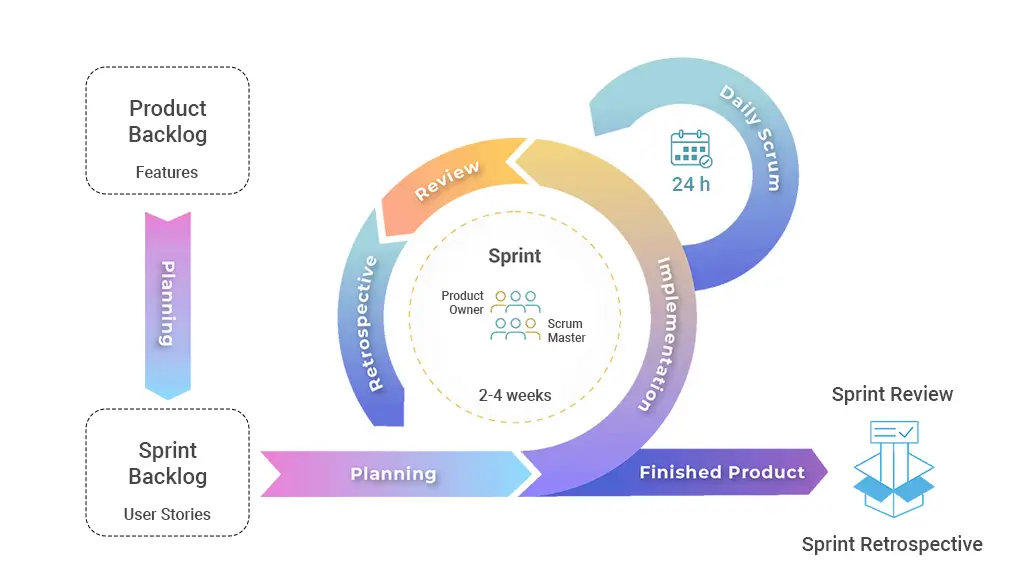
The Agile Scrum technique is very popular in the software development field because of its collaborative and iterative project management approach. Nevertheless, careful planning and execution are necessary when incorporating it into software testing to guarantee it aligns with the development process. In this tech blog post, we will discuss how the agile scrum approach is used in mobile application testing. We will examine successful tactics, optimal methods, and practical examples to assist testing teams in implementing the best principles and enhancing their testing procedures.
Table of Contents
- Understanding Agile Scrum Methodology
- Roles and Responsibilities in Agile Scrum Testing
- Steps Involved in Agile Scrum Methodology
- Agile Testing Techniques and Strategies
- Best Practices for Agile Testing Teams
- Case Study: Real-World Implementation of Agile Scrum in Testing
- Conclusion
Understanding Agile Scrum Methodology
Iterative development and customer collaboration are emphasized through the use of agile concepts and values. Important positions like Product Owner, Scrum Master, and Development Team are described along with procedures like Daily Standups, Sprint Planning, Sprint Reviews, and Sprint Retrospectives in the Scrum framework. Important frameworks like the Work End Table, Sprint Backlog, and Product Backlog are also highlighted.
Roles and Responsibilities in Agile Scrum Testing
The responsibilities of the tester within the Scrum team involve collaborating and cooperating with other team members. Permit testers to participate in all phases of the Agile Scrum process, including testing tasks. Strategies that encourage collaboration between developers, testers, and stakeholders in order to ensure harmony and mutual understanding of goals and primary issues.
Steps Involved in Agile Scrum Methodology

- Product Backlog Creation: This process is similar to creating a to-do list; however, it involves listing all your goals for the project.
- Sprint Planning: This is akin to creating a game plan; we take a number of things from that long list and determine what we can reasonably accomplish in the upcoming sprint.
- Daily Standup (Daily Scrum): See it as a brief team meeting that takes place every morning to discuss our goals for the day, our current projects, and any obstacles we may encounter.
- Execution of Sprints: Here's where the actual labor is done! With a goal of finishing those tasks by the conclusion of the sprint, we're focusing intently on them.
- Sprint Review: It's show-and-tell time at the end of the sprint! We present our finished product to the stakeholders and solicit their opinions.
- Sprint Retrospective: Following the review, we stand back and discuss how the sprint went, including what went well, what could have been improved, and what lessons may be applied.
Agile Testing Techniques and Strategies
- Drop-in approach: Include tests early in the development lifecycle to detect issues faster and reduce workload.
- Test Driven Development (TDD) and Behavior Driven Development (BDD): Methods for writing functional tests before deploying functionality to support development and enable performance simulation.
- Testing: Agile testing technology is used to find defects and explore the behavior of the application by adding test scripts.
Best Practices for Agile Testing Teams
- Continuous Integration and Continuous Testing: Automate testing execution and smoothly incorporate testing activities into the development pipeline with Continuous Integration and Continuous Testing.
- Utilize Automation Tools and Frameworks: In Agile Test Automation to enhance testing efficiency, boost test precision, and enhance test results.
- Design Collaboration: Involve testers, developers, and product owners in testing design documents to clarify requirements and explain use stories.
- Agile Metrics and Testing: Track key metrics (e.g. metrics, defects, velocity) to track progress, identify gaps, and drive continuous improvement.
Case Study: Real-World Implementation of Agile Scrum in Testing
In a race against time, a prominent HR Tech firm based in Hong Kong, embarked on a mission to fine-tune the performance of its website within just one month. Testers delved into optimizing their AI-powered platform, tailored to facilitate video interviews and pre-employment assessments across 13 Asian and European languages. Challenges abounded, from navigating the intricacies of AI-based performance testing to overcoming hurdles in uploading videos to AWS seamlessly. Dynamic token management and multi-user login complexities added further layers of complexity.
Agile principles were embraced by swiftly implementing solutions like dynamic API handling and Regular Expression Extraction to tackle hurdles head-on. By streamlining processes and enhancing features like video interview analysis and multi-language support, the project bolstered its platform's capabilities. The result? A tangible reduction in response times, a significant increase in user capacity, and improved resource utilization. Through an Agile lens, the company not only met its ambitious deadline but also demonstrated the power of iterative problem-solving and collaborative effort in delivering real-world solutions for today's dynamic tech landscape.
Conclusion
Using the Agile Scrum process at Software Testing Company requires a streamlined approach that integrates the testing process into the Agile development process. By using simple models, roles, and best practices, testing teams can improve collaboration, evaluation and feedback loop, and deliver the best products that meet customer needs and expectations.
This blog is designed to provide insights, practical strategies, and examples to guide testing teams in applying the Agile Scrum process to their tests. By following agile principles and changing testing methods accordingly, teams can foster continuous improvement, innovation, and contribute to the success of agile software development projects.
About Author
 Pramol Chandekar is a Sr. QA Executive at PixelQA, with a passion for continuous learning and embracing new technologies in the IT industry. Since beginning his journey in September 2019, Pramol has dedicated himself to mastering his craft and expanding his expertise daily, paving the way for future leadership roles. His ambitious goal is to ascend to the role of Project Lead and Project Manager, shaping impactful projects and driving innovation in the field.
Pramol Chandekar is a Sr. QA Executive at PixelQA, with a passion for continuous learning and embracing new technologies in the IT industry. Since beginning his journey in September 2019, Pramol has dedicated himself to mastering his craft and expanding his expertise daily, paving the way for future leadership roles. His ambitious goal is to ascend to the role of Project Lead and Project Manager, shaping impactful projects and driving innovation in the field.


